Watercolor Still Life Painting Subjects from Your Own Things
Pretend you’ve been given a watercolor painting assignment to paint two small still life arrangements.
For the first painting, the subject is a trinket from a gift shop. It’s cute and you like it, but you’ve never seen it before.
In the second still life, you’ll painting something you already own – a small item given to you by a treasured family member or friend.
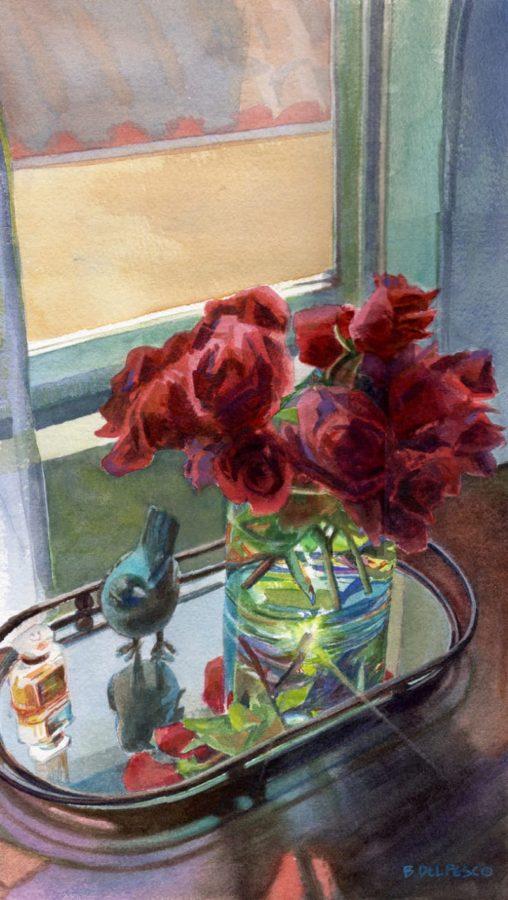
The Impact of Mindset While Making Art
What do you suppose you’ll think about while making each of those paintings? Beyond the usual decisions related to shape, color blending and watercolor treatments….
I bet you a penny that the first watercolor will be appropriate to your skill-level, and perfectly fine, but not as special as your familiar subject painting.
Your brain’s meandering while painting a borrowed item has no other place to go, beyond technique, and color, etc. (This is true for borrowed photos of places we’ve never visited, or people we don’t know), and that will show.
You’ll naturally ponder those same watercolor painting strategies on the second, familiar still life too, but the direction-based thoughts will be buffered and shined by memories of the origins of your trinket. Thinking about the person who gave it to you, why you bought it all those years ago, or the memories it conjures slip surreptitiously into your work.
I bet the watercolor painting of your own little treasure will outshine the newly introduced gift shop item painting by far.
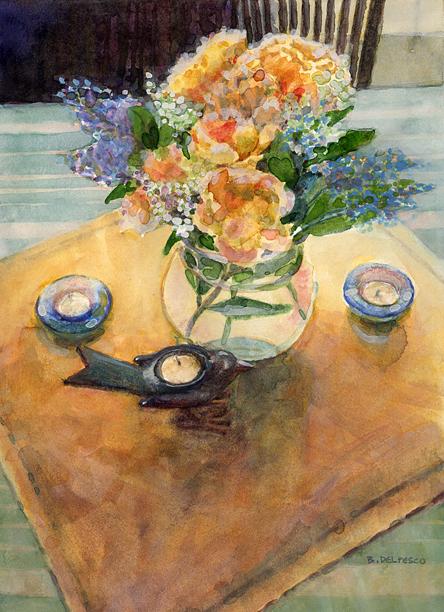
Put Yourself Inside Your Paintings
Whether we mean to include ourselves in a painting (like these artists did), or we are unaware of our insertion of self, every artist paints a little bit of themselves in each painting.
Every artist dips his brush in his own soul, and paints his own nature into his pictures.
Henry Ward Beecher
If you paint the objects in your own home that are well-worn, precious to you, or handed down through family, you’re painting more of yourself into the art, and imbuing each brush stroke with thoughts beyond just the technical considerations.
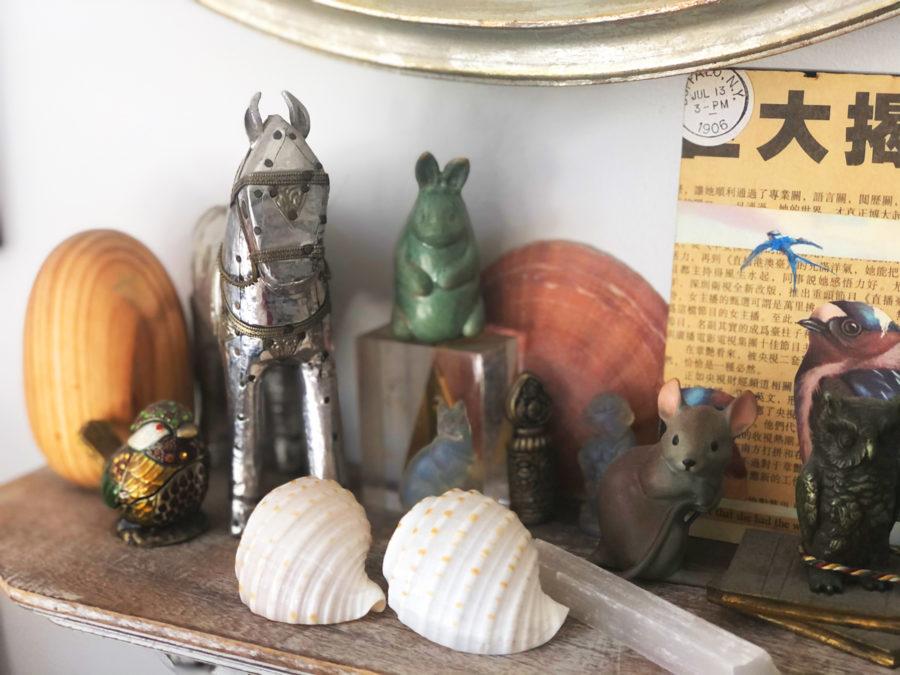
Paint, Draw and Print Your Own Items in Your Still Life Art
If you are one of the folks reading this who has no beloved trinkets, not a scrap of familial heirloom, and nothing precious in your still life stash, may I suggest a thrift store run? (That’s where I found the tin horse a few decades ago.)
If you’d rather shop online, have a look at this Etsy Shop, or this one for some potential still life treasures. Make them yours, love them well, and then try putting a few of them in your art. Let me know how that goes, okay?
Thanks for stopping by, and I’ll see you in the next post –
Belinda
P.S. Speaking of still life, have you seen the completely normal household items in these watercolors by Nono Garcia?
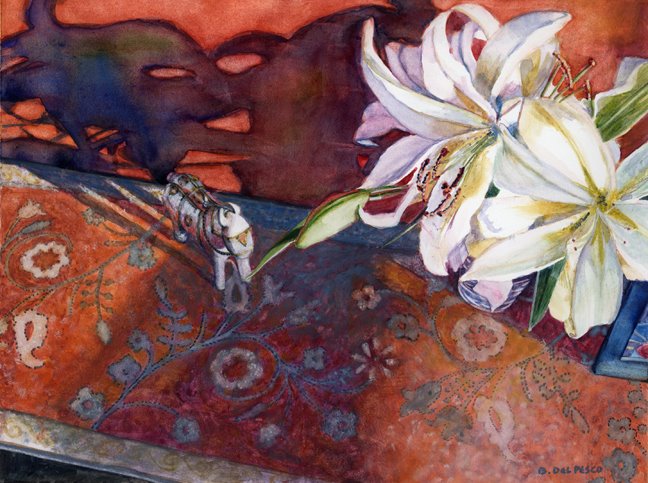
Art Quote
I see the still lifes as very related to the figure paintings. Often many of the same objects exist in both. In my most recent still lifes I have been thinking about possessions and their legacy (having recently lost a parent). As in the figure paintings I would like the still lifes to be able to hold several levels of meaning. There is often a sense of pun to them and also a literary quality—I am seeking a painting equivalent for the way in which, in a novel, a characterization can be conveyed by how the surface of things is presented.
Eve Mansdorf
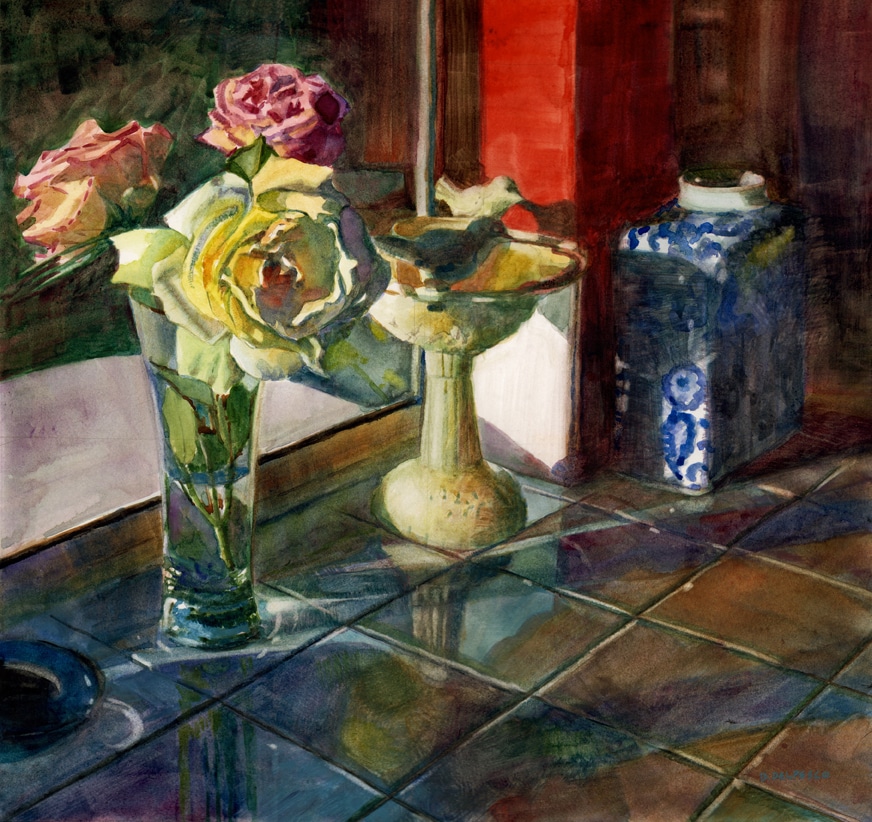

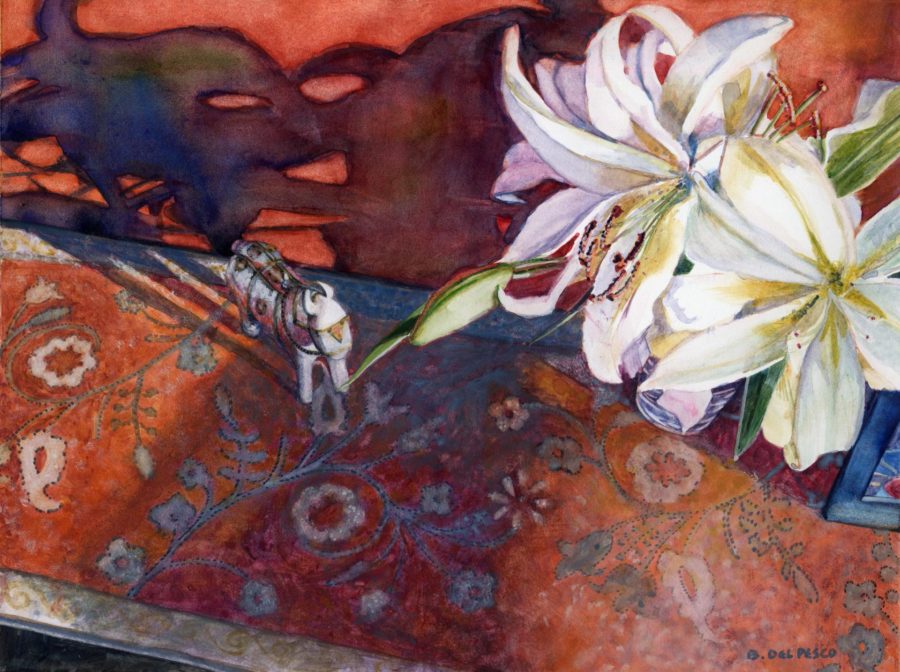

Belinda,
I’ve been following you for years and most admire your use of composition and light in your paintings. As a maturing artist (both in years and skill level) I have reached the point where putting my self into each work has become the most important goal. This post has given me much food for thought. Thank you for your generosity in sharing your techniques and musings.
Hi Sherry, As a fellow maturing artist (years and skills), I clink my tea cup to yours in artistic fellowship and conviction towards our goals. Carry on. And thanks for the long-term friendship too.
Interesting concept. I never thought about this before. As a non-painter, I always figured people who painted just *saw* things better than I did, and so they could paint one thing as well as another — just set it in front of them, they study it, they break out the brushes, and so on. But now that you talk about it, it makes perfect sense that something that one has looked or even glanced at, over and over again, in many different lightings, and in many different moods, would quite likely be much more provocative (evocative?). And that doesn’t even begin to involve the treasured gift aspect.
Hi Brendan, Your description of repeated glances, in differing light, with various moods is a testimonial to your observational skills. You’re a natural born noticer. 🙂 But I knew that about you already. Thanks for the note.
Thank you for another thoughtful post. The variety of techniques and tips that you offer are really valuable, and today’s writing about the meaning behind the content that we choose and how it affects our feelings as we work is equally worth thinking about.
Hi Julie, Thanks very much for your feedback! I hope you find some meaningful treasures tucked here and there, and they sneak into your next still life painting!